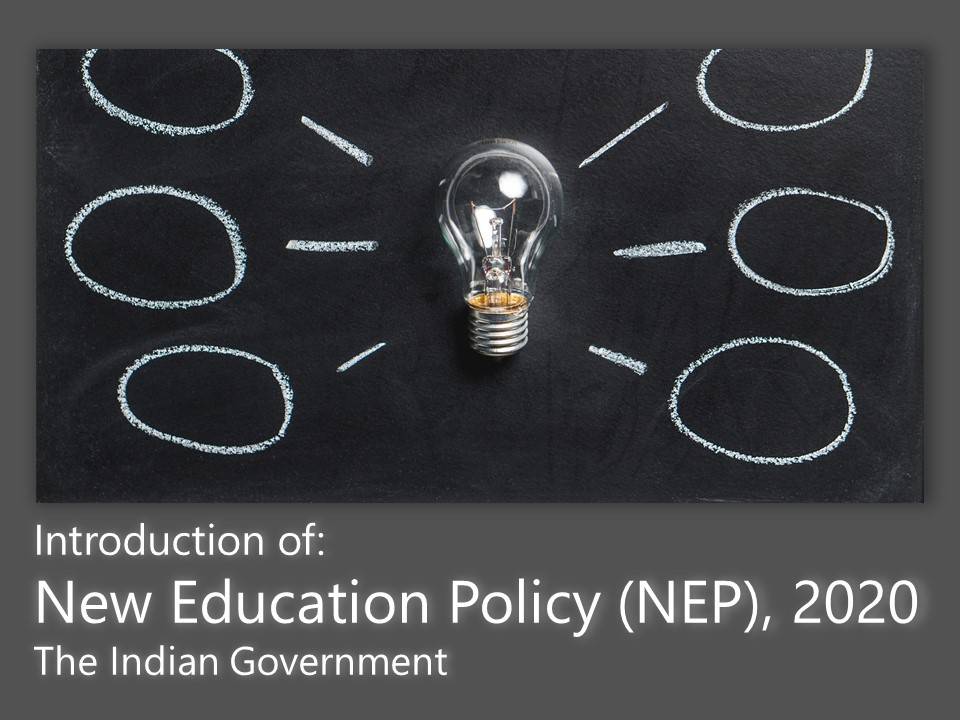
Education is one of the most dominant tools for diminishing poverty and inequality. It can be a key to enlarge India’s competitiveness in the global economy. Therefore, ensuring access to quality teachings and an adequate education system for all, in specific for the underprivileged population, is prominent to the economic and social evolution of India. And a recent policy by the Indian government authorities brings in ‘a hope’ for some favourable modifications in the Indian education system.
New National Education Policy 2020 or NEP is finally out and has been upheld by the Cabinet. The cabinet proposed it in the presence of union ministers, Prakash Javadekar and Ramesh Pokhriyal Nishank, both of whom are crucial aspects in the new policy development. With the declaration, the Ministry of Human Resource Development would henceforth be referred to as the Ministry of Education. From School Education to Higher Education, the NEP anticipates nourishing an entirely fresh pattern to the education sector of the country. The vital points from the policy have been shared by the Secretary of Higher Education and Secretary of School Education.
The new policy prioritises are “early childhood care and education”, where the first three years would be constructive playschool years of nursery and Kindergarten. The structure would surround 3 to 18 years of age. Early childhood care and education to get a complete National mission on Foundational Literacy and Numeracy. All-State administrations will formulate an undertaking plan for obtaining universal foundational literacy and numeracy in all primary schools for all learners by grade 3. Music, arts, sports, would be at the same level. Students will be given improved flexibility and preference of subjects to study, particularly in “secondary school”, including subjects in physical education, the arts and crafts, and vocational skills. Indian knowledge structures, speeches, culture and values to be given emphasis. Similarly, technology would be utilized largely. E-Content in local languages of each state, would be expanded and not only in Hindi and English. To make schools digitally equipped, National Educational Technology Forum, NETF would be established. State Open Schools will also offer a formal school system, secondary education programs, vocational education programs and adult literacy programs. The content will be diminished in each subject to its core essentials, key concepts, ideas, applications and problem-solving. The three-language acquired by students will be the selections of states, regions, and of the students, so at least two of the three languages are native to India.
The regulatory procedure of “higher education” to be unique for regulation, accreditation, budget and educational norm-setting, all under the regulation of Higher Education Commission of India or HECI, which will contain 4 other verticals too. In states, various universities to be called not on the factor of ownership but on quality of education. Motivation to multidisciplinary education, even IITs to move towards a more holistic curriculum with arts and humanities. The undergraduate degree will be of either 3 or 4 years period, with numerous exit choices within this period, with related certifications. The 4-year multidisciplinary bachelor's programme, however, shall be the preferred option for students. NEP 2020 attempts to improve the Gross Enrolment Ratio in higher education containing vocational education from 26.3% (2018) to 50% by 2035. At least 3.5 crore new seats will be added to higher education institutions. Students attempting a 4-year degree programme would have an option of getting a degree with Research if the research procedure is obtained in the area of study as determined. National Research Foundation would be set up with a goal to enable 'a culture of research'. NRF would be governed independently by a rotating board of governors. Students can assign to any set of subjects for higher education, put up with relevant subjects and other options. (Source- Times of India)
NEP Draft was similarly presented in 2019 where it shortly received both appreciations as well as intense criticism. For instance, the suggestion of making ‘Hindi’ one of the compulsory languages was soon shot down by many. Major reforms suggested in the higher education to give more flexibility to the students. The draft was then put in public domain and suggestions invited from the people and all stakeholders regarding the policy. MHRD had received lakhs of suggestions and the New Education Policy, 2020, the draft was consequently modified.
India's education system is one of the largest in the world with over ten million students. Nevertheless, an extremely limited number of people has access to higher education, and this is especially among the well-off. But this recent policy has distinct ways and only the coming time will explain the usefulness of this policy for a better education system in India.
